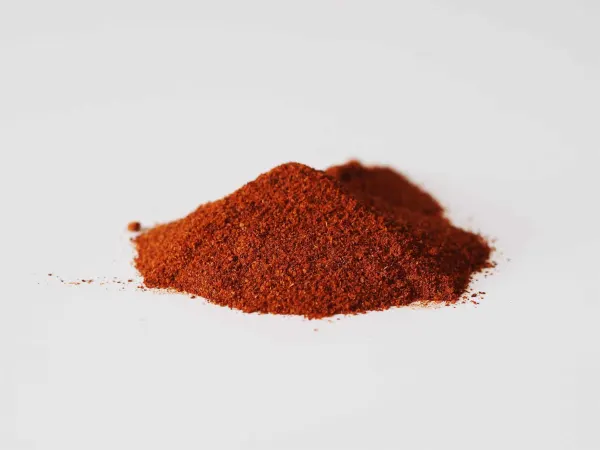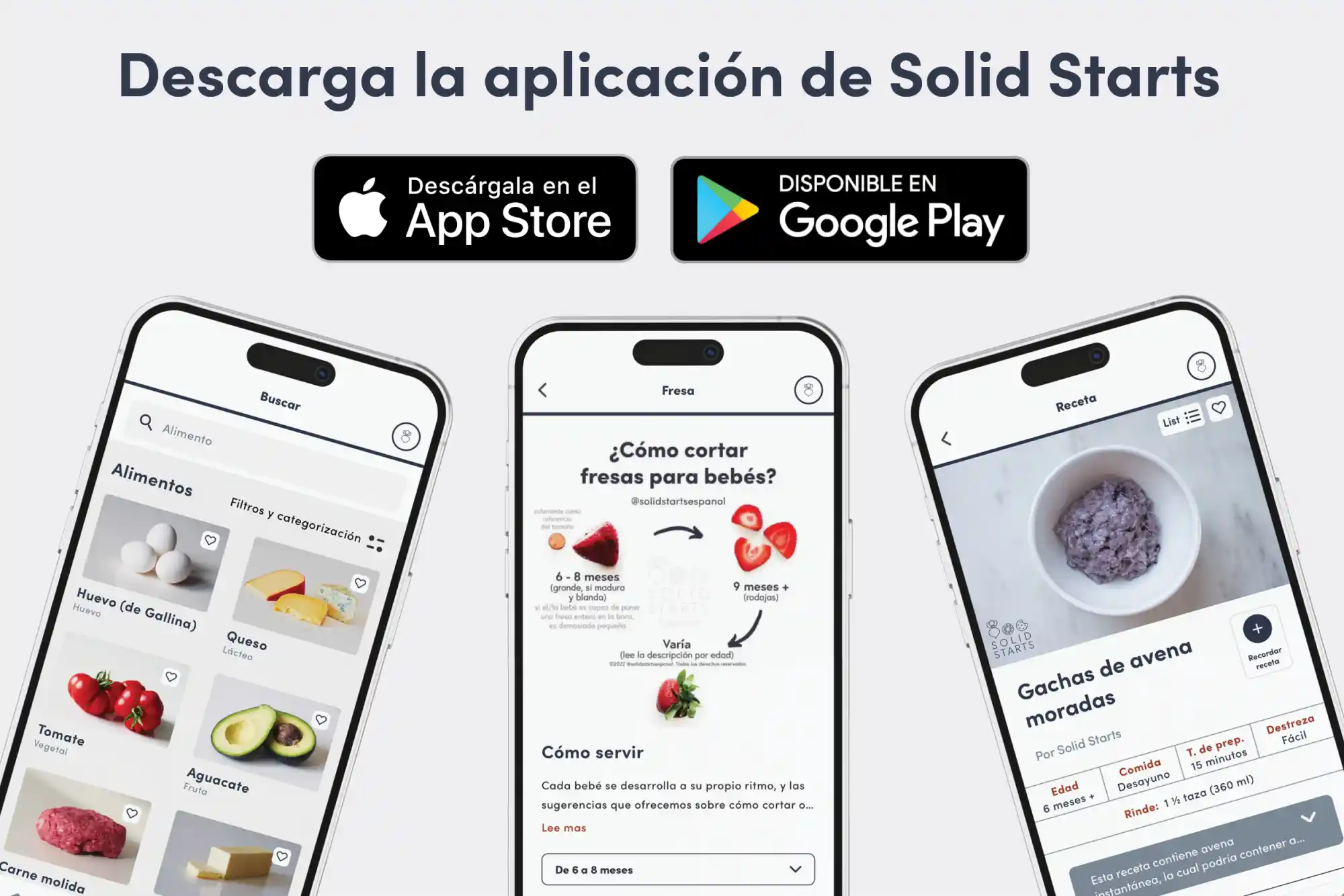Acceda a la base de datos First Foods® en Solid Starts App.
Leer másPimienta de Cayena
Hierba/Especia
Sugerencia de edades
6 meses
Alto contenido de hierro
No
Alérgeno común
No

When can babies have cayenne pepper?
¡Lo sentimos, esta página aún no está disponible en español! Estamos trabajando tan rápido como podemos para traducir todo nuestro contenido, gracias por tu paciencia y apoyo.
Babies may be introduced to spices as soon as they are ready to start solids, which is generally around 6 months old. However, because it is so intense, it may be best to introduce cayenne pepper after your baby’s first birthday. First, you want to avoid causing baby any pain as they start solids. Second, it's a good idea to give baby an opportunity to develop an awareness of individual ingredients and their distinctive tastes independent of intense spices. For example, if you introduce beans via a spicy chili, baby may learn that beans are spicy and may not want to try them again. We want baby to learn what beans taste like on their own and then to introduce spices with intention.
How do you serve cayenne pepper to babies?
Cada bebé se desarrolla a su propio ritmo, y las sugerencias que ofrecemos sobre cómo cortar o preparar determinados alimentos son generalizaciones para una amplia audiencia.
6 months old +:
Let baby taste food seasoned with a tiny amount of powdered cayenne pepper, and adjust the spice level based on the child’s responses and preferences. The goal is to follow the child’s lead and create positive experiences with new foods and flavors. Note that cayenne and other spicy foods can cause coughing. You can balance the heat by serving spicy food alongside a creamy food like mashed avocado, plain yogurt, or a small drink of breast milk or formula.
12 months old +:
Continue to serve age-appropriate dishes seasoned with cayenne pepper and adjust the amount of seasoning to the child’s taste. Offer a creamy food like mashed avocado, plain yogurt, or a small drink of milk on the side to help the child balance the heat.
¡Lo sentimos, esta página aún no está disponible en español! Estamos trabajando tan rápido como podemos para traducir todo nuestro contenido, gracias por tu paciencia y apoyo.
For more information on how to cut food for babies, visit our page on Food Sizes & Shapes.
Videos
Is cayenne pepper a choking hazard for babies?
No. Ground cayenne pepper presents a low risk when safely prepared for a child’s age and developmental ability, though, in theory, an individual could choke on any food. To reduce the risk, prepare and serve cayenne pepper in an age-appropriate way. As always, make sure you create a safe eating environment and stay within an arm’s reach of baby during meals.
Learn the signs of choking and gagging and more about choking first aid in our free guides, Infant Rescue and Toddler Rescue.
Is cayenne pepper a common allergen?
No. Allergies to cayenne ingestion are rare but have been reported. In those with cayenne pepper allergy, inhalation of the powder can also result in acute asthma symptoms. People who are allergic to latex or pollens (particularly birch or mugwort pollen) may also be allergic to peppers, such as cayenne, or experience Oral Allergy Syndrome (also known as pollen food allergy syndrome) upon ingestion. Oral Allergy Syndrome typically results in short-lived itching, tingling, or burning in the mouth and is unlikely to result in a dangerous reaction. Cooking cayenne pepper may help minimize and even eliminate the reaction.
Contact rashes are more frequently reported in sensitized individuals. In both children and adults, contact irritation reactions—such as temporary rashes, eye irritation, and digestive upset—to spicy peppers are frequently mistaken for allergic reactions. However, this is commonly due to the irritating qualities of capsaicin, the spicy component of peppers, in sensitive individuals, and is not typically a true allergic reaction.
Spicy foods like cayenne pepper may cause a harmless rash around the mouth while baby eats or may cause or worsen diaper rash. If baby has especially sensitive skin, consider applying a thin layer of barrier cream or ointment—such as pure petroleum jelly or a plant-based oil/wax balm—to baby’s face and bottom before serving foods prepared with cayenne to help prevent contact rashes.
As you would when introducing any new food, start by offering a small quantity for the first few servings. If there is no adverse reaction, gradually increase the quantity over future meals.
Is cayenne pepper healthy for babies?
Yes. Cayenne pepper offers small amounts of a variety of vitamins, minerals, and fiber. In particular, cayenne contains vitamins A, C, E, and K. Together, these nutrients help aid digestion, vision, immunity, and bone health. They also contain a variety of carotenoids like beta carotene, lutein, and zeaxanthin, in addition to antioxidants and phytochemicals. Research also suggests that cayenne offers anti-inflammatory, antimicrobial, antioxidant, and anticancer properties.
Contrary to popular belief, babies can enjoy big flavors, including heat from ingredients like cayenne. Consider starting with small tastes and adjust the spice level based on the child’s responses and preferences. The goal is to follow the child’s lead and create positive experiences with new foods and flavors. Taste the dish before serving to baby, and if the dish seems too spicy, adjust the seasonings to mellow the flavor.
Avoid cayenne pepper capsules, extracts, and supplements for babies and toddlers, as research on their safety is limited and their use has been associated with stomach upset and skin irritation.
★Tip: Balance the heat by serving foods seasoned with cayenne alongside creamy and cooling foods like mashed avocado, plain yogurt, or age-appropriate milk, like breast milk, formula, or cow’s milk. Acidic or water-based foods and drinks can intensify the heat.
¿Cuánta comida debo servirle al/a bebé?
Al comienzo, ofrece una pequeña cantidad y confía en que tu bebé sabe cómo mostrar interés si quiere más haciendo ruidos, gestos, o gritando o extendiendo la mano. Ten en cuenta que la mayoría de los bebés entre 6 y 9 meses de edad no consumen muchos alimentos sólidos al principio. Para los bebés de entre 10 y 12 meses de edad, enfócate en ofrecer el equivalente a una comida equilibrada para adultos, pero con porciones más pequeñas. Pon atención a las señales que te da el/la niño/a: cuando el/la bebé te muestre que desea “más”, ofrécele más comida. Cuando el/la bebé muestre señales de “ya terminé”, para de ofrecerle comida.
¿Cuáles son algunos ejemplos de alimentos con los que puedo comenzar?
Hay muchos alimentos que pueden ser excelentes opciones. Busca alimentos que permitan que el/la bebé se alimente solo/a fácilmente, que tengan bajo riesgo de ahogamiento y que ofrezcan los nutrientes que los bebés necesitan, como el hierro. Algunos de nuestros primeros alimentos favoritos incluyen brócoli al vapor, avena, y semilla de mango.
Nuestro equipo
Escrito por
Consejos de expertos directo a tu bandeja de entrada
¡Suscríbete y recibe correos semanales con recetas, consejos y más!
Copyright © 2025 • Solid Starts Inc





